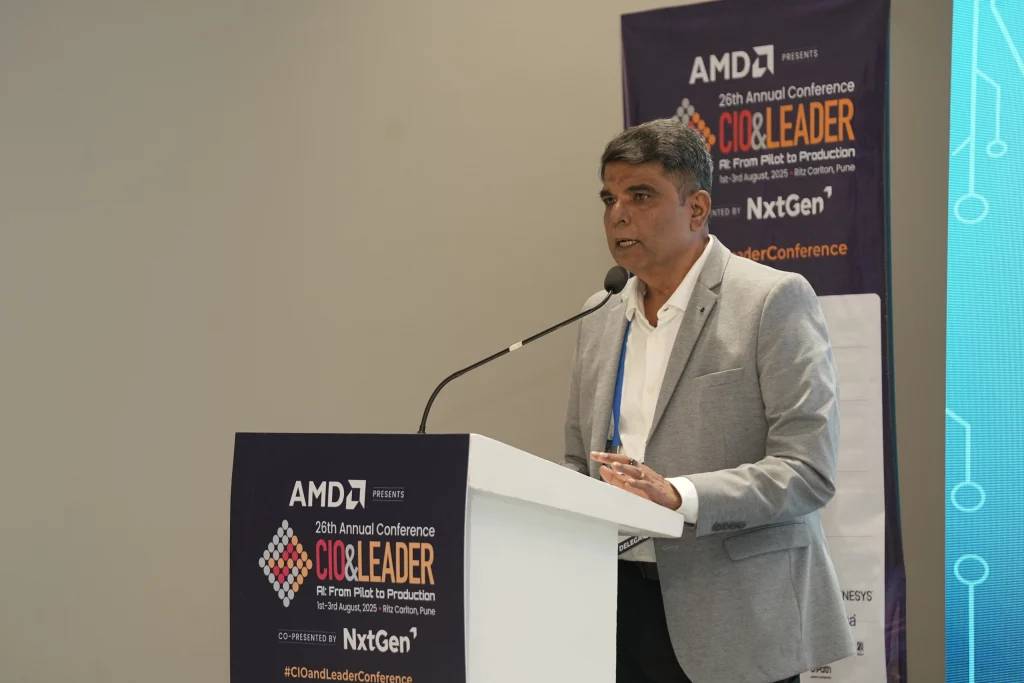Resilience isn’t a buzzword; it’s built into our system. By blending cloud, data, and empowered people, we build a supply chain backbone ready for any disruption.

When supply chains stumble, the losses are staggering. the lesson is clear: resilience cannot be an afterthought; it must be built into the system itself. From consolidating multiple data centers down to six, to rolling out Microsoft Dynamics 365 in 80+ countries, to empowering a new generation of developers, Garg is re-engineering how a lean global operation spanning 180 countries and 2,800 trade lanes stays steady in the face of disruption. His keynote was less about lofty slogans and more about pragmatic fixes, summed up in his mantra: ‘Predict early, prevent with precautions, and then perform to Excel’.
“Enabling your people, getting your data right, and keeping infrastructure robust on the cloud makes life easier. Resilience isn’t a buzzword for us, it’s inbuilt.”
The Three Pillars of Resilience – For me, resilience rests on three foundations: people, data, and infrastructure.
People First
At ECU, we invested in shared services teams for infrastructure, data architecture, and digital tech. At the core of this effort are young Gen Z developers, trained in Python and React. We strengthened their readiness through mandatory certifications, incentives, and recognition programs. We created a culture where training is rewarded, and resilience becomes second nature.
Data Standardization
To address long-standing inefficiencies, we implemented Microsoft Dynamics 365 across more than 80 of our key country entities. This enabled greater financial standardization in F&O, along with HR consistency and enablement by resolving issues like global HR recruitment and performance management. Our modernization also brought transparency to critical supply chain data, including arrival and departure times, and improved visibility through track-and-trace systems.
Infrastructure Consolidation
Perhaps our boldest move was reducing multiple data centers to just six, aligned with key geographies such as APAC, Europe, Asia, the US, and Latin America. Today, more than 85% of our workloads run on the cloud, spread across AWS and Microsoft Azure. While we once aimed for a single vendor, we realized the need to rethink cloud economics and prepare for a multi-vendor future.
Predict, Prevent, Perform
Disruptions in logistics are costly. Even a 4% loss in operations translates into massive financial setbacks. My resilience mantra is simple: predict early, prevent with precautions, and then perform. We build continuity into our daily operations rather than reacting after crises.
This approach goes beyond technology. By standardizing corporate functions such as finance and HR, we ensure visibility, consistency, and efficiency across ECU’s global footprint.
AI and the Road to Modernization
While I remain cautious about hype and hallucinations, I recognize AI’s role in supply chain visibility and reporting. We have started deploying AI-powered dashboards and modernizing our custom ERP systems to ensure accuracy in mission-critical processes. A few AI-driven projects are already live, selected from many identified use cases, each designed to improve customer experience and operational efficiency.
Resilience as Inbuilt Culture
Resilience cannot be bolted on; it must be inbuilt. From people readiness and data standardization to infrastructure modernization, we are embedding resilience into ECU’s DNA. In a business where we do not own assets but facilitate global freight flows, this mindset is not just a strategy- it is continuity.